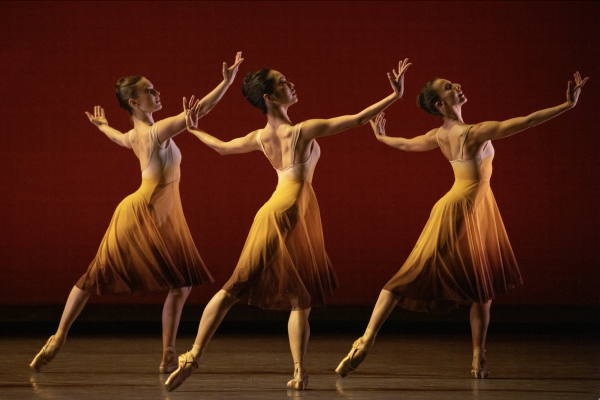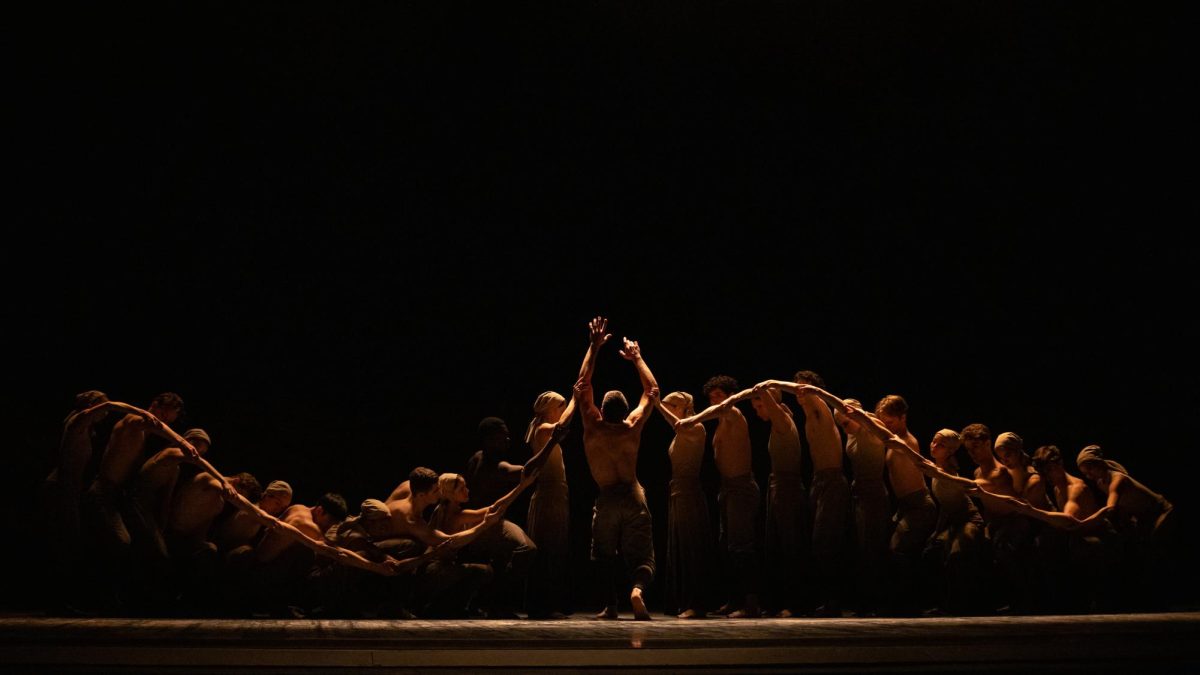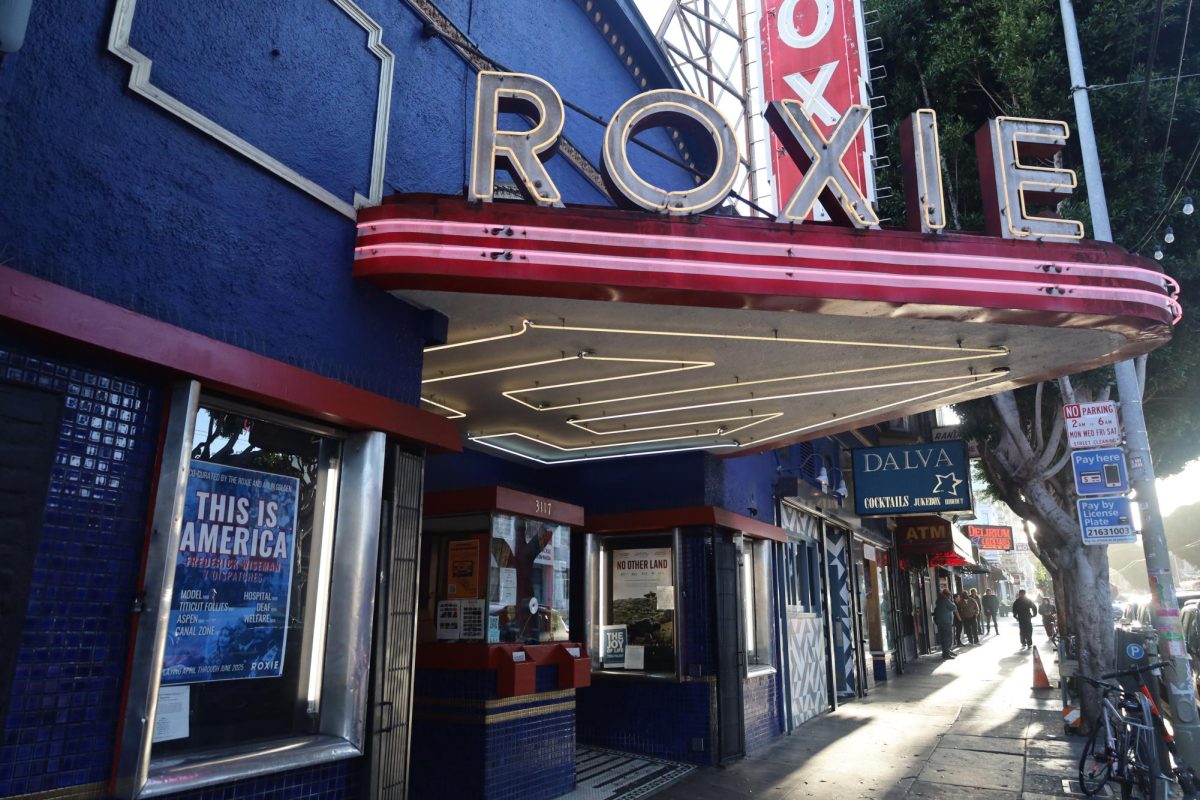It was a dark and stormy night on Valentine’s Day eve at the War Memorial Opera House as the San Francisco Ballet opened their night with the theme “Cool Britannia,” the second program of their season.
The night’s program was a series of three modern ballet works by three different British choreographers. The works included “CHROMA” choreographed by Sir Wayne McGregor, “Within the Golden Hour” by English choreographer Christopher Wheeldon and the North America debut of “Dust” by Akram Khan.
“CHROMA” debuted in 2006, commissioned for The Royal Ballet, while “Within the Golden Hour” was created in San Francisco in 2008. During this time in the early 2000s, these British artists gained wide fame in the dance world.
“Cool Britannia” is a term coined for the period during the 1960s and 1990s when British pop culture took an increased and prominent role in the media landscape of the English-speaking world. A play on words, the title is a reference to “Rule Britannia!,” an old patriot hymn of the U.K.
These ballets are not the classical interpretation of the art form. This is not “Swan Lake,” “The Nutcracker” or even “The Rite of Spring”. This is ballet deconstructed. There are no elaborate sets. There are no dancers in tutus. You will find no great leaps, “jeté,” as they’re referred to in ballet. Hyperfemme ballerinas are nowhere to be seen in this work. All of the dancers had androgynous presentations, at times indistinguishable from male or female. From the orchestra seats, the sound of the pit roared, but not with symphonic movements, but rather power chords booming The White Stripes’ “The Hardest Button to Button.”
The stage was sparsely set. Bright, bleached beiges predominated the entirety of the stage during the first movement, which matched the tone of “The Rite of Spring” with orchestration by composer Jody Talbot.

The second movement was cooler as light blue glows featured a female ensemble, at times a trio or quartet, of dancers shifting forms and casting enigmatic shadows with the lighting display. The work is a triumph of minimalism.
I also found it very raw. The costumes were essentially undergarments so that one could actually smell the dancers, making the performance an authentic experience of undisguised humanity. Projections of light were the only decoration on the bare walls. The choreography was highly synched to the orchestration with carefully placed contortions, stances, phrases and loops. It was all skill and no story. There were moments of crystalline stills and gentle movements that recalled Philip Glass’ “Glassworks.” Despite the name, I saw no chroma in the mostly white company in regards to the diversity of the cast.
Wheeldon’s work opened with a dramatic start. My notes simply said, “RED!” Bright crimson light beamed from the stage as two silhouettes danced to non-amplified music. This piece had energy, mystery and romance. Repeated phrases created a deep sense of longing. Long, strong strings from the pit pulled the dancers across the floor as the company went into their first en pointe of the night. Seeing that reward at already more than halfway way through the program after protracted anticipation was the epitome of delayed gratification. The lighting was a reflection of the minimal design of “CHROMA,” however this set evoked images of Mark Rothko as hues of turquoise lit an elegant pas de deux in a lovely display of pizzicato, light and color.
This piece is fleeting. Its story conveys a sense of support as dancers square each other up in costumes of golden ombré.
The finale, “Dust,” failed to break new ground. It started with potential as the company arranged themselves in a long, human thread of arms threaded together in what resembled DNA. A solo dancer stood in the middle of the line, which was stripped to his waist as each of his arms were coiled with the human chain so that when he lifted his arm, the whole line would undulate in a huge human wave that was an extension of himself. It was incredible.
However, the piece devolved into an anti-ballet. It ended with an eerie audio rendering of static sounds over a track of “Auld Lang Syne” as a depressing duet languished over an empty warscape.
“Cool Britannia” is a nontraditional experience of the ballet, but nonetheless is an incredible set of provocative modern works. Seeing modern dance on the SF Ballet’s stage was refreshing and enigmatic, and their season looks promising and off to a great start this year.










Jane Bretthauer • Feb 16, 2025 at 9:59 pm
Wheeldon’s “Within the Golden Hour” blends traditional and contemporary dance into an innovative whole, highlighting the dancers’ technical prowess and versatility. Posen’s costumes accentuate the dancers’ movements, while mirroring the colors of San Francisco skies, a beautiful sight.